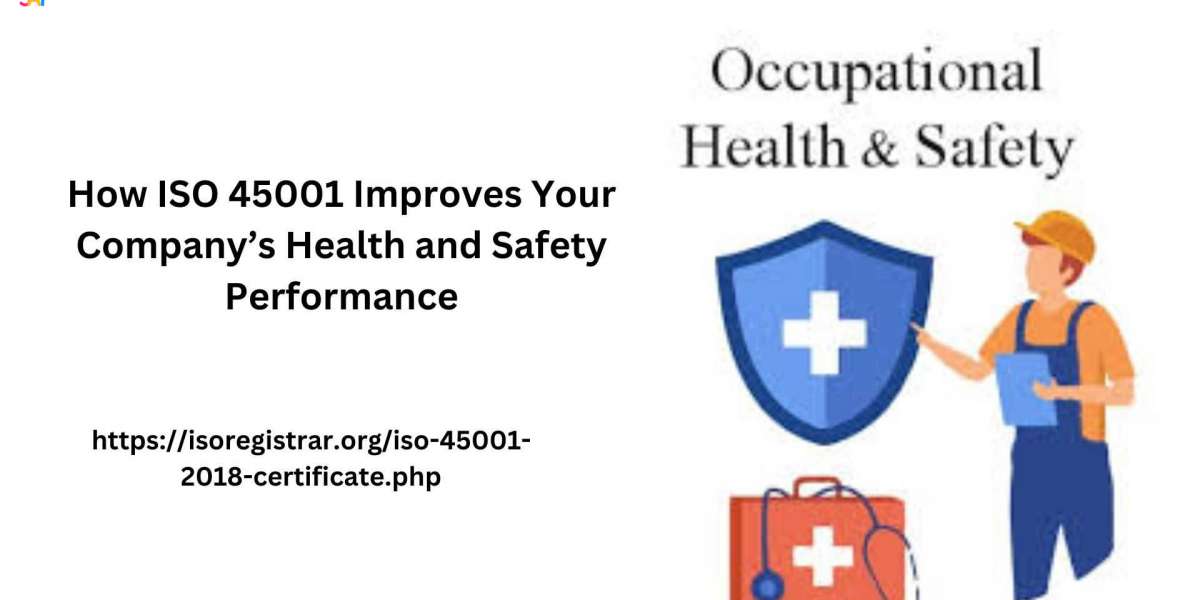ISO 45001 is the global standard for Occupational Health and Safety (OHS) management systems. Its primary goal is to help organizations create safer, healthier work environments, reduce workplace accidents, and protect the well-being of employees. Achieving ISO 45001 certification demonstrates that a company is committed to proactive safety management and continuous improvement in health and safety practices. By following the guidelines set out in ISO 45001, businesses can improve their health and safety performance in many significant ways, leading to better employee engagement, reduced risks, and enhanced overall performance.
1. Proactive Risk Management and Hazard Identification
One of the core aspects of ISO 45001 is its focus on proactive risk management. Rather than waiting for accidents to happen, the standard encourages companies to identify potential hazards and risks before they lead to injury or illness. This is achieved through thorough risk assessments, regular inspections, and hazard identification processes.
ISO 45001 requires businesses to assess risks systematically and implement appropriate controls to mitigate them. Whether it’s physical hazards (like machinery or slip hazards), chemical risks (like exposure to toxins), or psychosocial risks (such as stress or harassment), ISO 45001 ensures that all potential threats are identified and addressed.
- Creating a Safety-First Culture
ISO 45001 places a strong emphasis on establishing a safety-first culture throughout the organization. Safety culture refers to the shared values, attitudes, and practices related to health and safety in the workplace. For ISO 45001 to be successful, it requires full engagement from all employees, from top management to front-line staff.
When top management demonstrates a clear commitment to health and safety, it sets a tone that encourages employees to take safety seriously. ISO 45001 ensures that safety is not just the responsibility of a few but is integrated into everyday operations. It fosters employee involvement in safety activities such as risk assessments, safety meetings, and hazard reporting.
- Continuous Improvement and Ongoing Monitoring
One of the key principles of ISO 45001 is the concept of continuous improvement. The standard requires organizations to regularly review and update their health and safety practices to ensure they remain effective and responsive to changing risks. This ongoing process of monitoring and evaluation helps companies identify areas for improvement, ensuring that safety systems evolve.
ISO 45001 encourages businesses to set measurable safety objectives and track performance through regular audits and reviews.
- Improved Compliance with Regulations
ISO 45001 helps businesses stay compliant with ever-evolving local, national, and international regulations related to health and safety. Failure to comply with these laws can result in hefty fines, legal consequences, and reputational damage. The standard provides a clear framework for managing regulatory compliance by ensuring that all health and safety requirements are met.
5. Increased Employee Engagement and Morale
ISO 45001 places a significant emphasis on employee involvement, which directly impacts employee engagement and morale. When workers are actively involved in safety processes—such as risk assessments, safety committees, and safety training—it gives them a sense of ownership and responsibility for their well-being and the safety of their colleagues.
Engaged employees are more likely to report safety hazards, adhere to safety protocols, and actively contribute to safety improvements. This creates a feedback loop where employees feel valued and heard, which can lead to greater job satisfaction and improved productivity.
- Reduced Workplace Injuries and Illnesses
The ultimate goal of ISO 45001 is to reduce workplace injuries and illnesses. By implementing a structured safety management system, organizations can significantly lower the risk of accidents and health problems caused by work-related factors. The standard encourages businesses to put in place preventive measures, control mechanisms, and safety protocols that reduce the likelihood of accidents.
7. Lower Insurance Premiums and Financial Benefits
A reduction in workplace accidents and illnesses doesn’t just improve safety—it can also lead to financial savings. By reducing the frequency and severity of workplace incidents, companies can lower their insurance premiums. Insurers often offer lower rates to businesses that have effective health and safety management systems in place because they are seen as lower-risk clients.
8. Enhanced Reputation and Competitive Advantage
ISO 45001 certification can enhance your company’s reputation as a responsible, safety-conscious organization. In industries where health and safety are crucial, this certification serves as proof that the company is committed to providing a safe working environment for its employees. This can be a valuable differentiator in the marketplace, especially when competing for contracts or partnerships with clients who prioritize safety.
Note: You can also apply for iso 9001 certificate- quality management systems
Conclusion
ISO 45001 provides organizations with a structured and systematic approach to improving health and safety performance. By proactively identifying and controlling risks, fostering a safety-first culture, ensuring regulatory compliance, and engaging employees in safety processes, businesses can create safer, healthier work environments that benefit everyone. The result is a measurable reduction in accidents and illnesses, increased employee engagement and morale, and enhanced organizational performance.
Ultimately, ISO 45001 is not just about meeting regulatory requirements—it's about creating a culture of safety that leads to lasting improvements in health and safety outcomes. By achieving ISO 45001 certification, companies can improve their safety performance, protect their employees, and ensure long-term business success.




